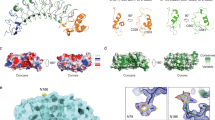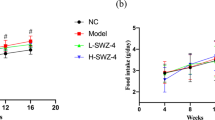Abstract
Signaling of the receptor for advanced glycation end products (RAGE) has been implicated in the development of injury-elicited vascular complications. Soluble RAGE (sRAGE) acts as a decoy of RAGE and has been used to treat pathological vascular conditions in animal models. However, previous studies used a high dose of sRAGE produced in insect Sf9 cells (sRAGESf9)and multiple injections to achieve the therapeutic outcome. Here, we explore whether modulation of sRAGE N-glycoform impacts its bioactivity and augments its therapeutic efficacy. We first profiled carbohydrate components of sRAGE produced in Chinese hamster Ovary cells (sRAGECHO) to show that a majority of its N-glycans belong to sialylated complex types that are not shared by sRAGESf9. In cell-based NF-κB activation and vascular smooth muscle cell (VSMC) migration assays, sRAGECHO exhibited a significantly higher bioactivity relative to sRAGESf9 to inhibit RAGE alarmin ligand-induced NF-κB activation and VSMC migration. We next studied whether this N-glycoform-associated bioactivity of sRAGECHO is translated to higher in vivo therapeutic efficacy in a rat carotid artery balloon injury model. Consistent with the observed higher bioactivity in cell assays, sRAGECHO significantly reduced injury-induced neointimal growth and the expression of inflammatory markers in injured vasculature. Specifically, a single dose of 3 ng/g of sRAGECHO reduced neointimal hyperplasia by over 70 %, whereas the same dose of sRAGESf9 showed no effect. The administered sRAGECHO is rapidly and specifically recruited to the injured arterial locus, suggesting that early intervention of arterial injury with sRAGECHO may offset an inflammatory circuit and reduce the ensuing tissue remodeling. Our findings showed that the N-glycoform of sRAGE is the key determinant underlying its bioactivity and thus is an important glycobioengineering target to develop a highly potent therapeutic sRAGE for future clinical applications.
Key message
-
The specific N-glycoform modification is the key underlying sRAGE bioactivity
-
Markedly reduced sRAGE dose to attenuate neointimal hyperplasia and inflammation
-
Provide a molecular target for glycobioengineering of sRAGE as a therapeutic protein
-
Blocking RAGE alarmin ligands during acute injury phase offsets neointimal growth









Similar content being viewed by others
References
Inoue T, Node K (2009) Molecular basis of restenosis and novel issues of drug-eluting stents. Circ J 73:615–621
Sprague AH, Khalil RA (2009) Inflammatory cytokines in vascular dysfunction and vascular disease. Biochem Pharmacol 78:539–552
Xu CB, Sun Y, Edvinsson L (2010) Cardiovascular risk factors regulate the expression of vascular endothelin receptors. Pharmacol Ther 127:148–155
Harja E, Bu DX, Hudson BI, Chang JS, Shen X, Hallam K, Kalea AZ, Lu Y, Rosario RH, Oruganti S et al (2008) Vascular and inflammatory stresses mediate atherosclerosis via RAGE and its ligands in apoE-/- mice. J Clin Invest 118:183–194
Park L, Raman KG, Lee KJ, Lu Y, Ferran LJ Jr, Chow WS, Stern D, Schmidt AM (1998) Suppression of accelerated diabetic atherosclerosis by the soluble receptor for advanced glycation end products. Nat Med 4:1025–1031
Sakaguchi T, Yan SF, Yan SD, Belov D, Rong LL, Sousa M, Andrassy M, Marso SP, Duda S, Arnold B et al (2003) Central role of RAGE-dependent neointimal expansion in arterial restenosis. J Clin Invest 111:959–972
Zhou Z, Wang K, Penn MS, Marso SP, Lauer MA, Forudi F, Zhou X, Qu W, Lu Y, Stern DM et al (2003) Receptor for AGE (RAGE) mediates neointimal formation in response to arterial injury. Circulation 107:2238–2243
Fiuza C, Bustin M, Talwar S, Tropea M, Gerstenberger E, Shelhamer JH, Suffredini AF (2003) Inflammation-promoting activity of HMGB1 on human microvascular endothelial cells. Blood 101:2652–2660
Yan SD, Schmidt AM, Anderson GM, Zhang J, Brett J, Zou YS, Pinsky D, Stern D (1994) Enhanced cellular oxidant stress by the interaction of advanced glycation end products with their receptors/binding proteins. J Biol Chem 269:9889–9897
Lin L, Park S, Lakatta EG (2009) RAGE signaling in inflammation and arterial aging. Front Biosci 14:1403–1413
Degryse B, Bonaldi T, Scaffidi P, Muller S, Resnati M, Sanvito F, Arrigoni G, Bianchi ME (2001) The high mobility group (HMG) boxes of the nuclear protein HMG1 induce chemotaxis and cytoskeleton reorganization in rat smooth muscle cells. J Cell Biol 152:1197–1206
Reddy MA, Li SL, Sahar S, Kim YS, Xu ZG, Lanting L, Natarajan R (2006) Key role of Src kinase in S100B-induced activation of the receptor for advanced glycation end products in vascular smooth muscle cells. J Biol Chem 281:13685–13693
Rouhiainen A, Kuja-Panula J, Wilkman E, Pakkanen J, Stenfors J, Tuominen RK, Lepantalo M, Carpen O, Parkkinen J, Rauvala H (2004) Regulation of monocyte migration by amphoterin (HMGB1). Blood 104:1174–1182
Bierhaus A, Illmer T, Kasper M, Luther T, Quehenberger P, Tritschler H, Wahl P, Ziegler R, Muller M, Nawroth PP (1997) Advanced glycation end product (AGE)-mediated induction of tissue factor in cultured endothelial cells is dependent on RAGE. Circulation 96:2262–2271
Li J, Schmidt AM (1997) Characterization and functional analysis of the promoter of RAGE, the receptor for advanced glycation end products. J Biol Chem 272:16498–16506
Tanaka N, Yonekura H, Yamagishi S, Fujimori H, Yamamoto Y, Yamamoto H (2000) The receptor for advanced glycation end products is induced by the glycation products themselves and tumor necrosis factor-alpha through nuclear factor-kappa B, and by 17beta-estradiol through Sp-1 in human vascular endothelial cells. J Biol Chem 275:25781–25790
Orlova VV, Choi EY, Xie C, Chavakis E, Bierhaus A, Ihanus E, Ballantyne CM, Gahmberg CG, Bianchi ME, Nawroth PP et al (2007) A novel pathway of HMGB1-mediated inflammatory cell recruitment that requires Mac-1-integrin. EMBO J 26:1129–1139
Yonekura H, Yamamoto Y, Sakurai S, Petrova RG, Abedin MJ, Li H, Yasui K, Takeuchi M, Makita Z, Takasawa S et al (2003) Novel splice variants of the receptor for advanced glycation end-products expressed in human vascular endothelial cells and pericytes, and their putative roles in diabetes-induced vascular injury. Biochem J 370:1097–1109
Zhang L, Bukulin M, Kojro E, Roth A, Metz VV, Fahrenholz F, Nawroth PP, Bierhaus A, Postina R (2008) Receptor for advanced glycation end products is subjected to protein ectodomain shedding by metalloproteinases. J Biol Chem 283:35507–35516
Wang Y, Wang H, Piper MG, McMaken S, Mo X, Opalek J, Schmidt AM, Marsh CB (2010) sRAGE induces human monocyte survival and differentiation. J Immunol 185:1822–1835
Varki A, Cummings RD, Esco JD, Freeze HH, Stanley P, Bertozzi CR, Hart GW, Etzler ME (2009) Essentials of glycobiology, 2nd edn. Cold Spring Harbor Laboratory, Cold Spring Harbor
Ghaderi D, Zhang M, Hurtado-Ziola N, Varki A (2012) Production platforms for biotherapeutic glycoproteins. Occurrence, impact, and challenges of non-human sialylation. Biotechnol Genet Eng Rev 28:147–175
Park SJ, Kleffmann T, Hessian PA (2011) The G82S polymorphism promotes glycosylation of the receptor for advanced glycation end products (RAGE) at asparagine 81: comparison of wild-type rage with the G82S polymorphic variant. J Biol Chem 286:21384–21392
Srikrishna G, Huttunen HJ, Johansson L, Weigle B, Yamaguchi Y, Rauvala H, Freeze HH (2002) N-Glycans on the receptor for advanced glycation end products influence amphoterin binding and neurite outgrowth. J Neurochem 80:998–1008
Srikrishna G, Nayak J, Weigle B, Temme A, Foell D, Hazelwood L, Olsson A, Volkmann N, Hanein D, Freeze HH (2010) Carboxylated N-glycans on RAGE promote S100A12 binding and signaling. J Cell Biochem 110:645–659
Turovskaya O, Foell D, Sinha P, Vogl T, Newlin R, Nayak J, Nguyen M, Olsson A, Nawroth PP, Bierhaus A et al (2008) RAGE, carboxylated glycans and S100A8/A9 play essential roles in colitis-associated carcinogenesis. Carcinogenesis 29:2035–2043
Pang J, Zeng X, Xiao RP, Lakatta EG, Lin L (2009) Design, generation, and testing of mammalian expression modules that tag membrane proteins. Protein Sci 18:1261–1271
Tomiya N, Kurono M, Ishihara H, Tejima S, Endo S, Arata Y, Takahashi N (1987) Structural analysis of N-linked oligosaccharides by a combination of glycopeptidase, exoglycosidases, and high-performance liquid chromatography. Anal Biochem 163:489–499
Tae HJ, Marshall S, Zhang J, Wang M, Briest W, Talan MI (2012) Chronic treatment with a broad-spectrum metalloproteinase inhibitor, doxycycline prevents the development of spontaneous aortic lesions in a mouse model of vascular Ehlers-Danlos syndrome. J Pharmacol Exp Ther 343:246–251
Neeper M, Schmidt AM, Brett J, Yan SD, Wang F, Pan YC, Elliston K, Stern D, Shaw A (1992) Cloning and expression of a cell surface receptor for advanced glycosylation end products of proteins. J Biol Chem 267:14998–15004
Renard C, Chappey O, Wautier MP, Nagashima M, Lundh E, Morser J, Zhao L, Schmidt AM, Scherrmann JM, Wautier JL (1997) Recombinant advanced glycation end product receptor pharmacokinetics in normal and diabetic rats. Mol Pharmacol 52:54–62
Leclerc E, Fritz G, Weibel M, Heizmann CW, Galichet A (2007) S100B and S100A6 differentially modulate cell survival by interacting with distinct RAGE (receptor for advanced glycation end products) immunoglobulin domains. J Biol Chem 282:31317–31331
Reeves RH, Yao J, Crowley MR, Buck S, Zhang X, Yarowsky P, Gearhart JD, Hilt DC (1994) Astrocytosis and axonal proliferation in the hippocampus of S100b transgenic mice. Proc Natl Acad Sci U S A 91:5359–5363
Wei W, Lampe L, Park S, Vangara BS, Waldo GS, Cabantous S, Subaran SS, Yang D, Lakatta EG, Lin L (2012) Disulfide bonds within the C2 domain of RAGE play key roles in its dimerization and biogenesis. PLoS One 7:e50736
Lee YC (1992) Biochemistry of carbohydrate-protein interaction. FASEB J 6:3193–3200
Dam TK, Brewer CF (2010) Maintenance of cell surface glycan density by lectin-glycan interactions: a homeostatic and innate immune regulatory mechanism. Glycobiology 20:1061–1064
Dam TK, Brewer CF (2010) Multivalent lectin-carbohydrate interactions energetics and mechanisms of binding. Adv Carbohydr Chem Biochem 63:139–164
Durocher Y, Butler M (2009) Expression systems for therapeutic glycoprotein production. Curr Opin Biotechnol 20:700–707
Werner RG, Kopp K, Schlueter M (2007) Glycosylation of therapeutic proteins in different production systems. Acta Paediatr Suppl 96:17–22
Bianchi ME (2007) DAMPs, PAMPs and alarmins: all we need to know about danger. J Leukoc Biol 81:1–5
Moon C, Krawczyk M, Ahn D, Ahmet I, Paik D, Lakatta EG, Talan MI (2003) Erythropoietin reduces myocardial infarction and left ventricular functional decline after coronary artery ligation in rats. Proc Natl Acad Sci U S A 100:11612–11617
Moon C, Krawczyk M, Paik D, Lakatta EG, Talan MI (2005) Cardioprotection by recombinant human erythropoietin following acute experimental myocardial infarction: dose response and therapeutic window. Cardiovasc Drugs Ther 19:243–250
Acknowledgments
We thank Robert Monticone for rat VSMCs and advice on cell migration assays. We also thank reviewers of this manuscript for their inputs that improve our work. The work was supported by the intramural research program of the NIH, National Institute on Aging (LL, MIT, RPX, and EGL), and the Korea Research Foundation grant KRF-2009-013-E00008 (SP). WW was supported in part by the Oak Ridge Institute for Science and Education’s Research Associates Program at NIH; JP was a recipient of the 2011 Johns Hopkins “Excellent in Medical Student Research Award”; and RAR and DB were supported by intramural research training awards from NIH.
Conflict of interest
NIH has filed a patent based on this work. The authors (SP, WW, R-P X, MIT, EGL, or LL) have not received any royalties from this patent.
Author information
Authors and Affiliations
Corresponding author
Additional information
Hyun-Jin Tae, Ji Min Kim, Sungha Park, and Noboru Tomiya contributed equally in this study.
Electronic supplementary material
Below is the link to the electronic supplementary material.
ESM 1
(PDF 546 kb)
Rights and permissions
About this article
Cite this article
Tae, HJ., Kim, J.M., Park, S. et al. The N-glycoform of sRAGE is the key determinant for its therapeutic efficacy to attenuate injury-elicited arterial inflammation and neointimal growth. J Mol Med 91, 1369–1381 (2013). https://doi.org/10.1007/s00109-013-1091-4
Received:
Revised:
Accepted:
Published:
Issue Date:
DOI: https://doi.org/10.1007/s00109-013-1091-4




